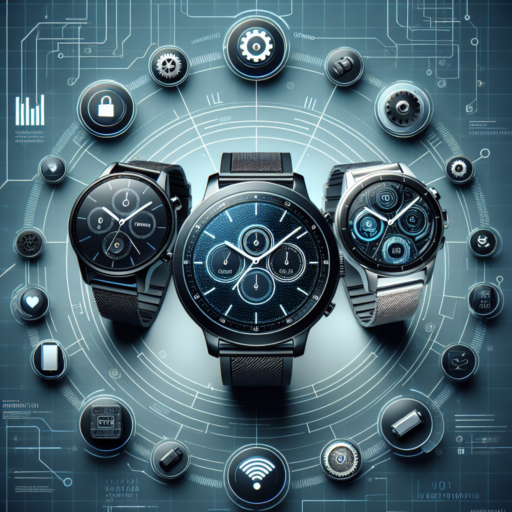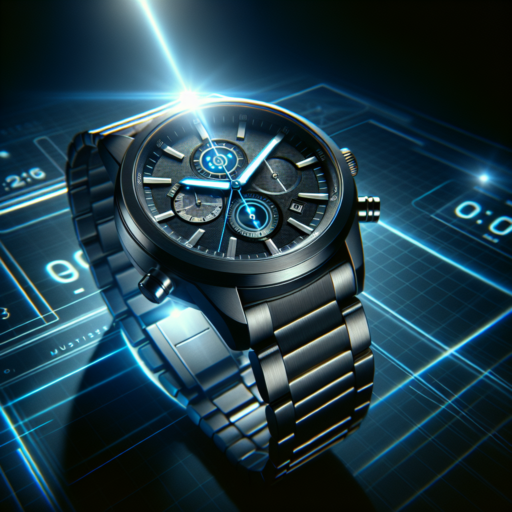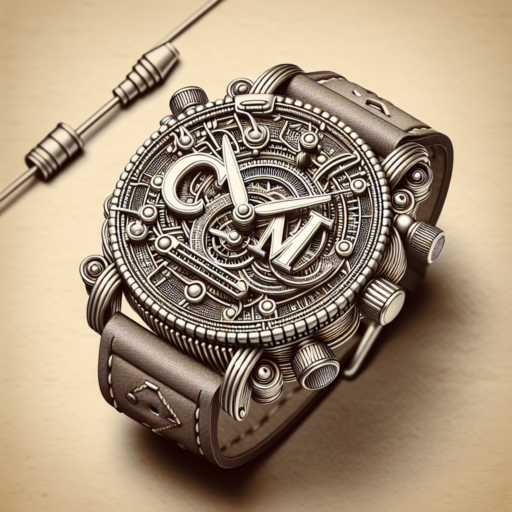Top Three Smartwatches for 2023: Reviews and Comparison
The smartwatch market in 2023 has seen its fair share of innovative launches, offering users more features and capabilities than ever before. As these devices continue to evolve, they are becoming an indispensable part of our daily lives, not only for tracking fitness and health metrics but also for enhancing productivity. The top three contenders in this space have set themselves apart through a combination of advanced functionalities, user-friendly interfaces, and stylish designs. Let’s delve into a detailed comparison and review of these standout models.
Apple Watch Series 7
Leading the pack is the Apple Watch Series 7, renowned for its expansive screen real estate and enhanced durability. This model introduces a new retina display, making it easier to read and interact with, even when on the go. The Series 7 also boasts the most robust health and fitness features available on a smartwatch, including blood oxygen monitoring and an ECG app. Its seamless integration with the iOS ecosystem makes it the ultimate companion for iPhone users, though its premium price tag and compatibility limits with Android devices are worth considering.
Samsung Galaxy Watch 4
Not far behind is the Samsung Galaxy Watch 4, which stands out for its unique blend of health insights powered by the latest Wear OS. This collaboration between Samsung and Google has resulted in a smartwatch that not only offers comprehensive health tracking features, including body composition analysis but also provides a wealth of apps and services available through Google Play. Its customizable watch face and strap options ensure that it can match any style, making it a versatile choice for Android users.
Garmin Venu 2 Plus
The Garmin Venu 2 Plus is the dark horse of the smartwatch world in 2023, catering especially to fitness enthusiasts and outdoor adventurers. Its standout feature is the remarkable battery life, lasting up to 9 days on a single charge, which eclipses its competitors. Moreover, the Venu 2 Plus offers an unparalleled GPS experience and over 25 built-in indoor and outdoor sports apps, making it the ideal choice for individuals seeking a rugged, fitness-first smartwatch. While it may lack the extensive smart features of its rivals, its health and fitness tracking accuracies are second to none.
How to Choose the Best Smartwatch: Features to Consider
Choosing the right smartwatch can be as daunting as deciding on a new smartphone. In today’s market, a smartwatch acts as a functional extension of your phone while also adding a touch of personal style. When selecting the best smartwatch for your needs, several key features should guide your decision.
Compatibility with Your Smartphone
One of the first factors to consider is whether the smartwatch is compatible with your current smartphone. An incompatible smartwatch may not only limit the functionalities you can access but also impact the efficiency of the device. Whether you’re an Android or iOS user, there’s a compatible smartwatch designed to sync seamlessly with your phone, enhancing your overall user experience.
Battery Life and Charging Options
The longevity of a smartwatch’s battery can greatly affect your daily usage and convenience. Some smartwatches offer a battery life that extends for days on a single charge, while others may require daily charging. Additionally, the method and ease of charging are equally important to consider. Wireless charging and fast-charging capabilities are features that add to the convenience factor of a smartwatch.
Health and Fitness Tracking Capabilities
For many users, a smartwatch’s ability to track health and fitness activities is a critical deciding factor. From monitoring heart rate and sleep patterns to counting steps and measuring specific exercise sessions, the depth of health tracking varies among different models. Ensuring that your chosen smartwatch supports the specific health and fitness metrics you’re interested in is crucial for maximizing its utility.
Comparing Battery Life: Which Smartwatch Lasts the Longest?
When it comes to choosing the right smartwatch, battery life is a critical factor for many users. The convenience of tracking your health, receiving notifications, and using apps without constant recharges is essential. Several top brands have made significant strides in optimizing battery efficiency, but which ones truly stand out?
The Leaders in Longevity
Not all smartwatches are created equal, especially when we talk about how long they can last on a single charge. Brands like Garmin and Fitbit have consistently showcased models that push the boundaries of battery life, offering devices that can go for days, if not weeks, without needing a recharge. Garmin, known for its robust, outdoor-centric smartwatches, often leads the pack with models boasting up to 14 days of battery life in smartwatch mode.
Factors Affecting Battery Performance
Several factors contribute to the impressive battery life of these devices. Usage patterns such as GPS and heart rate monitoring can significantly drain your smartwatch’s battery. However, features like customizable battery modes and battery-saving functionality play a vital role in extending the device’s longevity. Moreover, the technology behind the screen, whether it’s OLED or LCD, also impacts how much power the watch consumes.
In evaluating smartwatch battery life, it’s clear that advancements in battery technology and energy-efficient features are pushing the limits of what’s possible. However, the balance between battery longevity and feature usage remains a deciding factor for many users in their quest for the perfect smartwatch.
The Best Fitness Features in Today’s Top Three Smartwatches
Finding the perfect smartwatch with advanced fitness features can be a game-changer for your workout routine. In today’s market, three smartwatches stand out due to their exceptional fitness tracking capabilities. These devices not only monitor your heart rate and steps but also offer a variety of specialized functions designed to keep you on top of your health and fitness goals.
Comprehensive Health Monitoring
All three top smartwatches offer comprehensive health monitoring features. This includes continuous heart rate tracking, sleep analysis, and stress monitoring. Moreover, they have built-in GPS for tracking runs, hikes, and more, providing detailed insights into your physical activities. Their ability to track multiple types of workouts, from swimming to cycling, makes them versatile companions for any fitness enthusiast.
Personalized Fitness Programs
Another standout feature in these smartwatches is their personalized fitness programs. They offer tailored workout suggestions and coaching based on your fitness level and goals. Whether you’re a beginner trying to get into shape or an experienced athlete looking to break records, these smartwatches adapt to your needs, offering personalized guidance and motivation.
The advanced sensors equipped in these models also enable them to monitor your VO2 max and provide insights into your energy levels throughout the day. This information can help optimize your workout schedules and recovery periods, ensuring you get the most out of your fitness regime. With these smartwatches, staying on top of your fitness and health has never been easier.
Smartwatch Integration: Compatibility with Your Smartphone
The seamless integration between smartwatches and smartphones has revolutionized the way we interact with our digital devices. Ensuring your smartwatch is compatible with your smartphone is key to unlocking a universe of convenience and functionality. Most smartwatches are designed to work flawlessly with smartphones, providing notifications, app integration, and even the ability to answer calls directly from your wrist.
When it comes to choosing a smartwatch, understanding the specifics of compatibility is crucial. For example, Apple Watches are tailored to integrate with iPhones, offering a smooth connection between devices. On the other hand, Android users might lean towards Wear OS by Google smartwatches or Samsung’s Galaxy Watch series, which are renowned for their compatibility with a wide range of Android devices. This ecosystem compatibility enhances the overall experience by enabling features like syncing fitness data, managing schedules, and even controlling smart home devices directly from the smartwatch.
It’s also important to consider the version of the operating system on both the smartwatch and the smartphone. Compatibility often hinges on the software version, with newer models supporting more advanced features and offering better integration. Regular software updates can also play a crucial role in maintaining compatibility and ensuring your devices work seamlessly together over time. Exploring the specific features available through integration can help in making an informed choice about which smartwatch to pair with your smartphone.
User Experience: Interface and Ease of Use in Leading Smartwatches
The User Experience (UX) of smartwatches has evolved dramatically over the years, placing a greater emphasis on the interface and ease of use. As these wearable devices become more integrated into our daily lives, it’s crucial that they not only perform a wide range of tasks but do so in a way that’s intuitive and straightforward for users. In this context, leading smartwatches are constantly innovating to provide an optimal balance between functionality and usability.
The key to a superior UX in smartwatches is an interface that presents information in a clear and accessible manner. This involves a thoughtful layout of apps and notifications, customizable watch faces, and responsive touch controls. Moreover, voice commands and gesture recognition are becoming increasingly prevalent, offering hands-free operation that immensely enhances convenience and ease of use. These features collectively contribute to a smooth interaction between the user and the device, making the management of daily tasks and health monitoring more efficient.
Another critical aspect is the integration of advanced technologies to improve UX. For instance, leading smartwatch makers are incorporating high-resolution displays, haptic feedback systems, and longer battery life to elevate the overall experience. High-resolution displays ensure information is easy to read at a glance, haptic feedback provides tactile responses for user actions, and extended battery life guarantees the device can be used throughout the day without needing a recharge. These technological advancements are instrumental in making smartwatches more user-friendly and indispensable.
Water Resistance and Durability: Which Smartwatch Stands Out?
When evaluating the plethora of smartwatches available on the market, two critical factors that often sway a buyer’s decision are water resistance and durability. These features not only determine how well the smartwatch can withstand the rigors of daily life but also how versatile it is in various environments, from the office to the great outdoors.
Understanding Water Resistance Ratings
The water resistance of smartwatches is typically rated by an Ingress Protection (IP) code or the more specialized water resistance depth (ATM). An IP68 rating, for instance, indicates that the device can withstand dust, dirt, and sand, and is resistant to submersion up to a maximum depth of 1.5m underwater for up to thirty minutes. On the other hand, an ATM rating provides a more specific insight into the depth of water a watch can handle before becoming susceptible to damage. For example, a smartwatch with a 5 ATM rating is considered safe for shallow-water activities such as swimming in a pool.
Materials Matter for Durability
The durability of a smartwatch often hinges on the materials used in its construction. Manufacturers may use a variety of materials ranging from stainless steel to aluminum for the case, while straps might be made from silicone, leather, or fabric. Additionally, the type of glass used for the screen (such as Gorilla Glass or sapphire crystal) significantly affects scratch resistance and overall longevity. A smartwatch designed with high-quality materials and a robust build is more likely to withstand accidental drops, bumps, and scrapes, ensuring it remains in optimal condition for longer.
By analyzing these factors, consumers can identify which smartwatch models stand out in terms of water resistance and durability. This evaluation is crucial for those who lead active lifestyles or seek a device that can endure varied environmental conditions without compromise.
No se han encontrado productos.
Price Comparison: Finding the Best Value Among the Top Three Smartwatches
When considering the purchase of a top-tier smartwatch, price is often a deciding factor for many consumers. With the ever-evolving technology and features packed into these wrist-worn gadgets, finding the best value can feel like a daunting task. This comparison aims to dissect the pricing strategies of the top three smartwatches to aid buyers in making an informed choice.
The Spectrum of Pricing
The price range for the leading smartwatches varies significantly, reflecting the diversity in functionality, brand prestige, and wearable technology advancements. From budget-friendly options that offer basic smart functionalities to high-end models boasting an array of sensors and capabilities, understanding the price spectrum can help pinpoint where the real value lies for an individual’s specific needs.
Featured Comparisons
- Entry-Level Smartwatch: The starting point for those looking to enter the world of smartwatches without breaking the bank. These models focus on core features such as notifications, basic fitness tracking, and simple app functionality.
- Mid-Range Contender: A step up, offering a balance between affordability and enhanced features. These smartwatches introduce more comprehensive fitness and health monitoring, alongside improved display technology and battery life.
- Premium Selection: At the top of the price range, these smartwatches are the epitome of technology and design. With unmatched feature sets, including ECG, GPS, and extensive app ecosystems, they cater to those seeking the very best without concern for cost.
Understanding the discrepancies in price and features among the top three smartwatches is crucial for consumers aiming to find the best value. By carefully considering what each price point has to offer in terms of functionality, durability, and brand reputation, buyers can align their purchase with their personal needs and preferences, ensuring a satisfying investment in their tech wardrobe.
Looking Ahead: What’s Next for the Top Three Smartwatches?
The dynamic landscape of smartwatches is continuously evolving, with the top three brands leading the charge into the future. As technology advances, these brands are poised to unveil new features, designs, and capabilities that will redefine what we expect from a smartwatch. The question on everyone’s mind is, «What’s next for the top three smartwatches?» Let’s delve into the anticipated advancements and trends that could shape the next generation of these wearable devices.
Enhancements in Battery Life and Charging Technology
One of the most anticipated improvements in the next wave of smartwatches from the leading brands involves battery life and charging technology. Users have long desired a smartwatch that can keep up with their busy lifestyles without the need for frequent recharges. Rumors and patents indicate that the top brands are exploring innovative solutions such as solar charging capabilities and more efficient battery cells. These advancements could significantly extend the battery life of future smartwatches, making them even more indispensable to users.
Integration of Advanced Health Monitoring Features
Health and fitness tracking have become cornerstone features of modern smartwatches. However, the top three smartwatch manufacturers are not resting on their laurels. In the pursuit of providing even more value, these brands are expected to integrate advanced health monitoring technologies. Predictions include the introduction of features capable of measuring blood glucose levels non-invasively and improved heart rate monitoring for a more comprehensive health assessment. Such features will not only enhance the user experience but also pave the way for smartwatches to play a more significant role in preventive healthcare.
Expanding Compatibility and Interconnectivity
The future of the top three smartwatches also lies in their ability to seamlessly integrate and communicate with a wider array of devices and systems. As the Internet of Things (IoT) continues to expand, these smartwatches are expected to become central hubs for managing a variety of connected gadgets in personal and professional environments. Enhanced compatibility with smartphones, home automation systems, and even vehicles is anticipated. This broadening of interconnectivity will empower users, offering unprecedented control and convenience at their fingertips.




